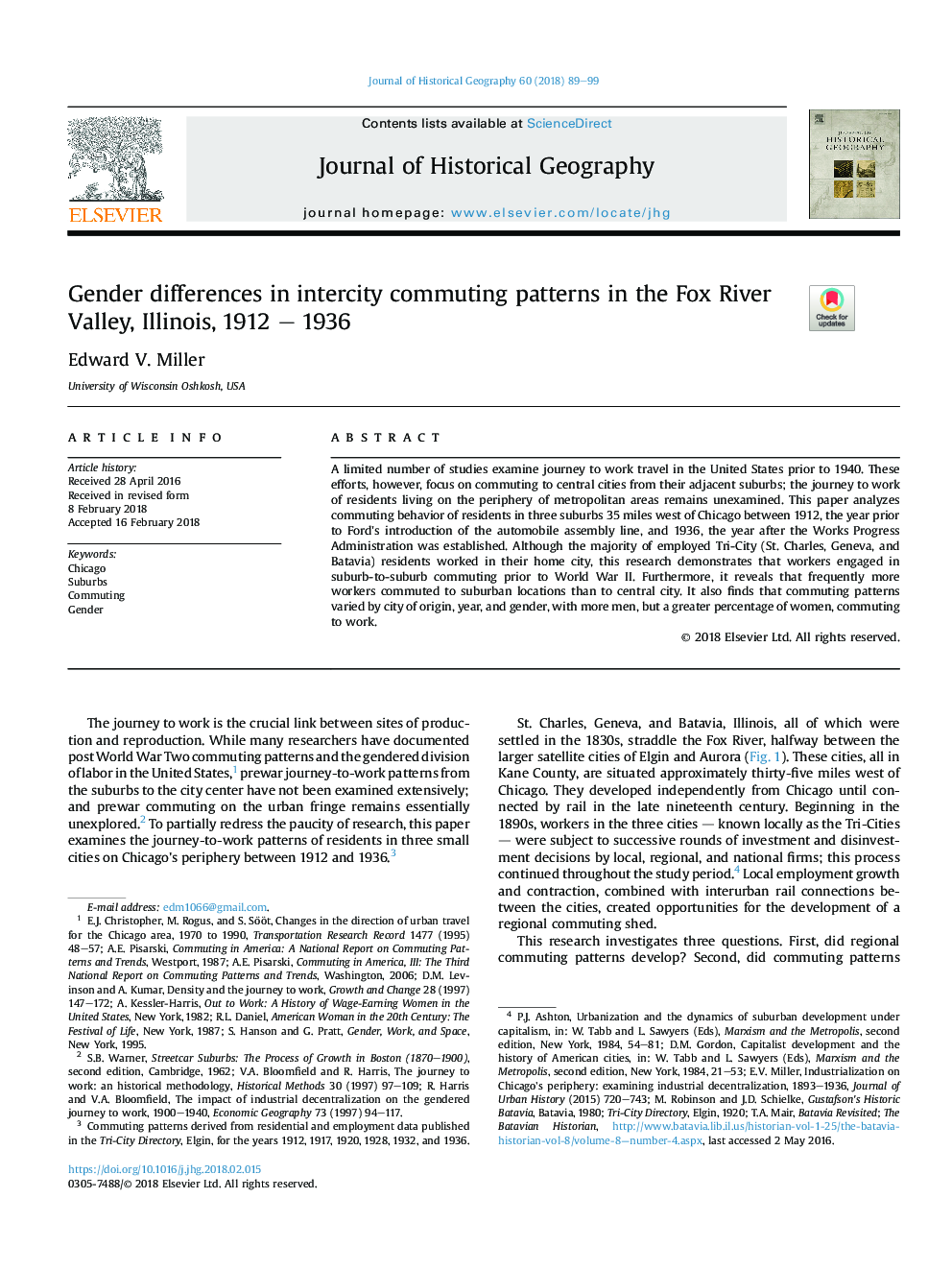| Article ID | Journal | Published Year | Pages | File Type |
|---|---|---|---|---|
| 7446787 | Journal of Historical Geography | 2018 | 11 Pages |
Abstract
A limited number of studies examine journey to work travel in the United States prior to 1940. These efforts, however, focus on commuting to central cities from their adjacent suburbs; the journey to work of residents living on the periphery of metropolitan areas remains unexamined. This paper analyzes commuting behavior of residents in three suburbs 35 miles west of Chicago between 1912, the year prior to Ford's introduction of the automobile assembly line, and 1936, the year after the Works Progress Administration was established. Although the majority of employed Tri-City (St. Charles, Geneva, and Batavia) residents worked in their home city, this research demonstrates that workers engaged in suburb-to-suburb commuting prior to World War II. Furthermore, it reveals that frequently more workers commuted to suburban locations than to central city. It also finds that commuting patterns varied by city of origin, year, and gender, with more men, but a greater percentage of women, commuting to work.
Related Topics
Social Sciences and Humanities
Arts and Humanities
History
Authors
Edward V. Miller,
